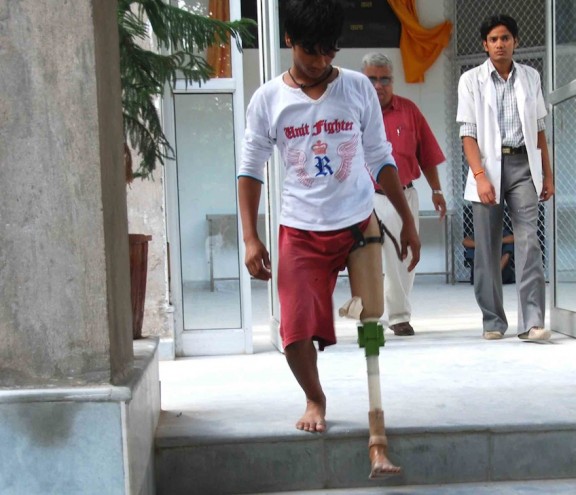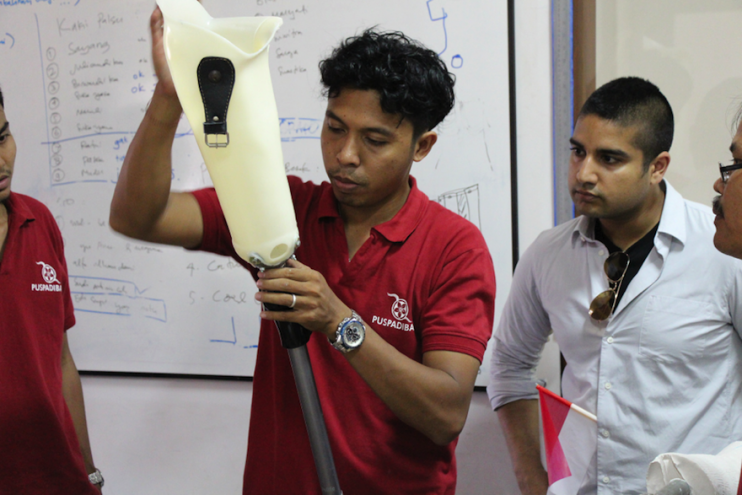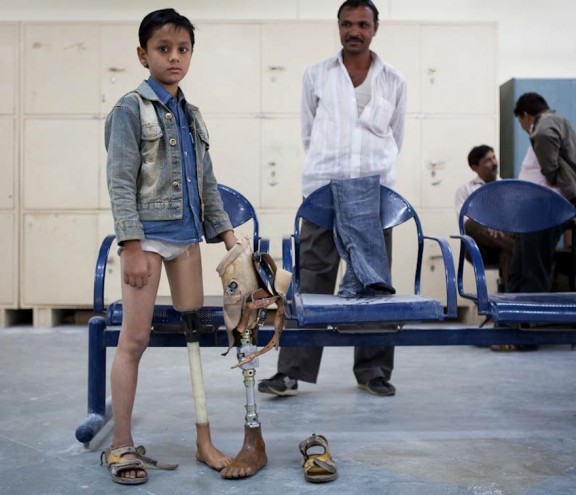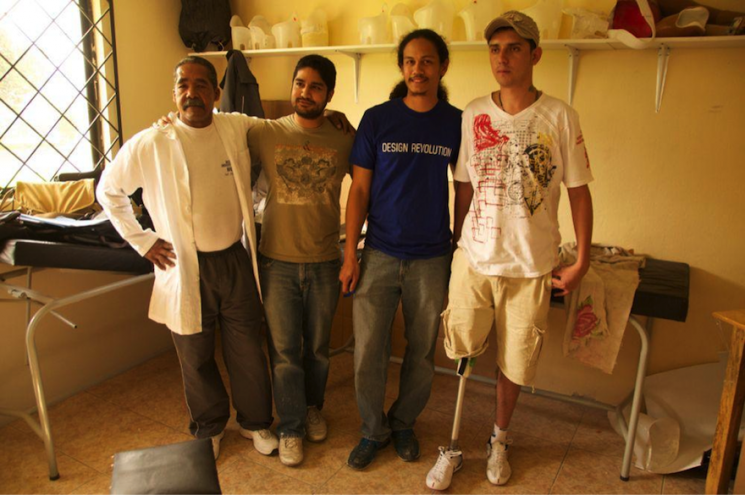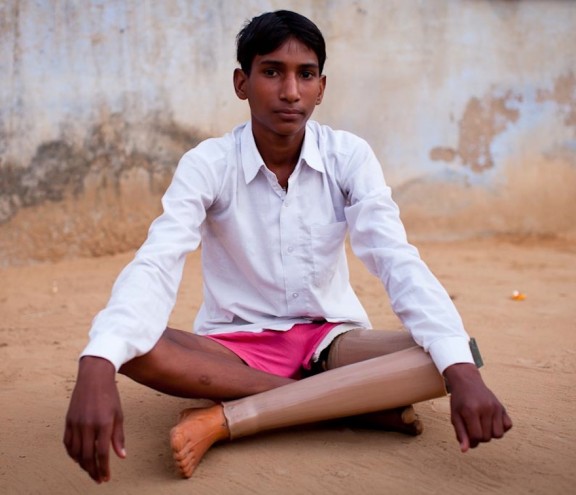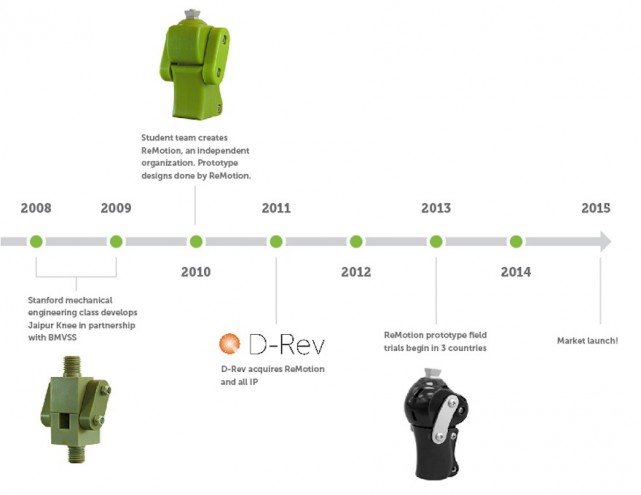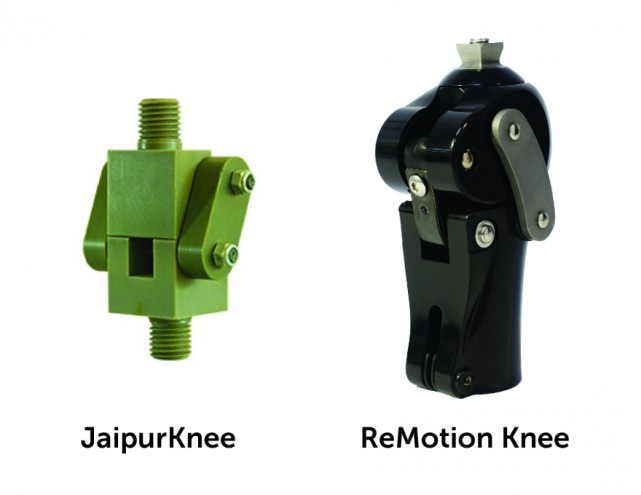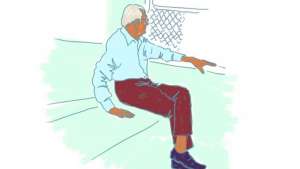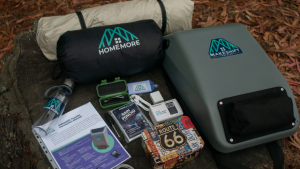From the Series
Good healthcare is not always affordable to those who need it. In many cases, simple solutions are too expensive for low-income populations and their health problems prevent them from working or studying to change their economic status. D-Rev, a California-based non-profit working to design and deliver medical technologies that close the quality healthcare gap, have designed the ReMotion Knee – a low-cost, high performance prosthetic knee.
“The ReMotion project originally started after BMVSS [a Jaipur-based non-profit] approached Stanford for help designing an effective, affordable knee joint,” says Nicole Rappin, operations manager at D-Rev. “After the project ended, we were immediately struck by how pervasive this problem is: prosthetists around the world express frustration at the lack of prosthetic knees available to them and their patients. We learned that, in most developing countries, amputees were otherwise healthy, young victims of traffic accidents that had almost overnight gone from self-reliant members of society to losing control of their own mobility.”
In 2009, a group of Stanford students working with BMVSS designed the Jaipur Knee. In 2011 D-Rev took over the development of the knee and along with Vinesh Narayan – one of the original Stanford students – D-Rev began prototyping the ReMotion Knee. The Jaipur Knee is still available through the BMVSS organisation.
The Remotion Knee will launch in the last quarter of 2015, after going through rigorous testing, modification and prototyping. Five patients in Ecuador trialled an early prototype in 2011, and in 2013 a further 100 patients were fitted with ReMotion prototypes in India, Guatemala and Indonesia.
“The patients that we treat are generally young and active – people for whom a high quality prosthetic would make a big difference in their quality of life by returning them to the community as workers and family members,” says Rappin. “The Jaipur Knee is primarily fitted in India through the Jaipur Foot Organisation [BMVSS], and occasionally in other parts of the world through remote fitting camps run by the organisation. The ReMotion Knee was piloted in the countries listed above – India, Ecuador, Guatemala, and Indonesia – and when it launches later this year it will be available across the globe.”
Where knees on the western market can be as expensive as $2000, the ReMotion knee costs only $80. The nearest competitor in price is a single axis knee produced by the International Red Cross costing $150 and offering much lower mobility. Patients fitted with the ReMotion Knee have been able to walk, ride motorcycles and return to work. The ReMotion Knee is a polycentric prosthetic, meaning that it mimics the natural gait of a patient. At such a low retail price, the ReMotion Knee becomes a viable alternative to crutches and canes.
D-Rev have received generous support for the ReMotion Knee from the Indo-US Science and Technology Forum, Wellcome Trust, the US government’s National Endowment of the Arts, and Focusing Philanthropy. We recently featured Brilliance, a low-cost phototherapy device designed by D-Rev to treat babies with jaundice in poor communities.


